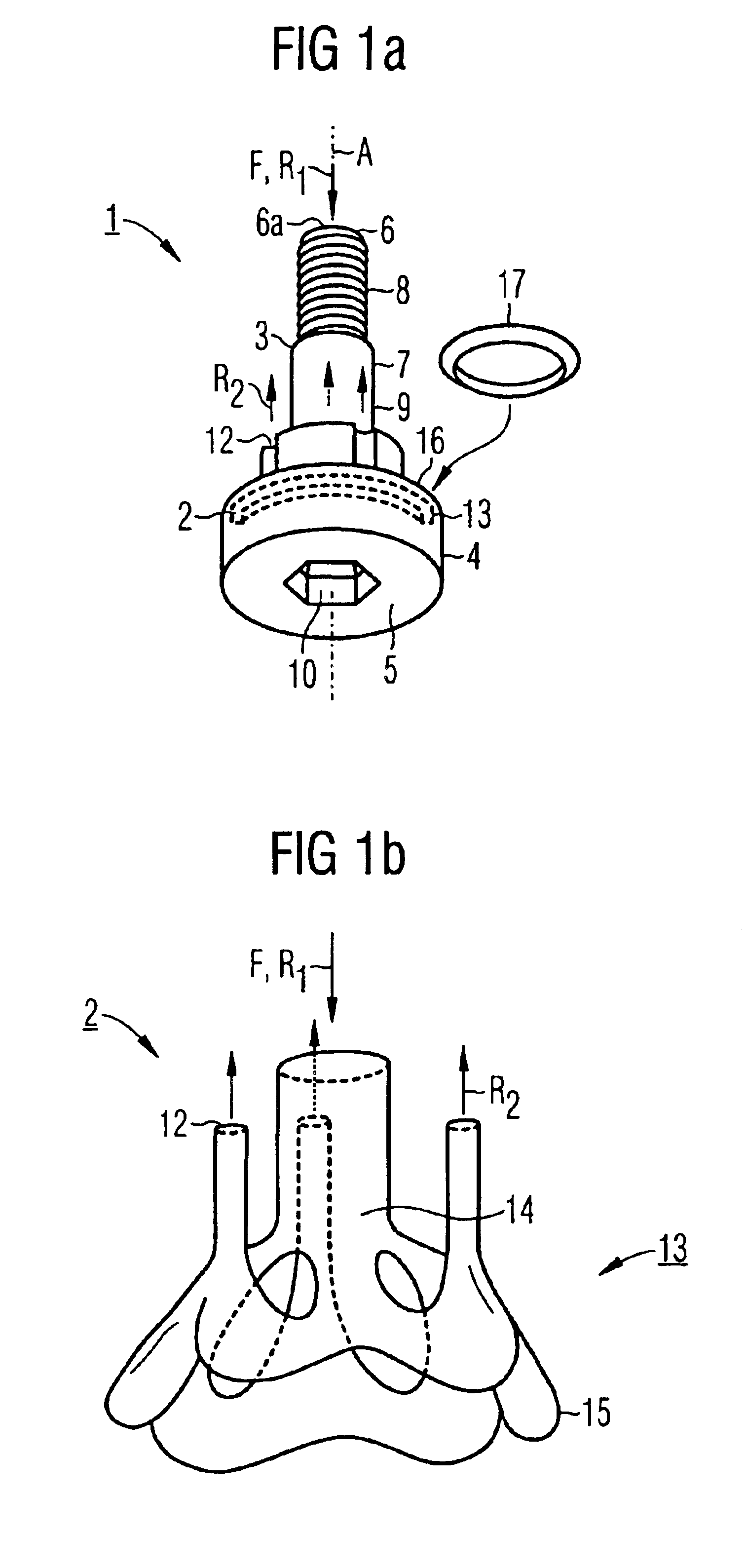Internally coolable screw
- Summary
- Abstract
- Description
- Claims
- Application Information
AI Technical Summary
Benefits of technology
Problems solved by technology
Method used
Image
Examples
Embodiment Construction
[0020]FIG. 1a shows an internally coolable screw 1, the coolant passage or cooling passage 2 of which is shown as a cutaway detail in FIG. 1b. The screw 1 has a shank 3 and a head 4 and extends along an axis or axis of symmetry A from a top surface 5, lying at the bottom in the representation, of the head 4 up to a shank end 6. The shank 3, with a shank circumference 7, has a thread 8 and a screw collar 9 of thickened design defining the shank 3 toward the head 4. On its top surface 5, the head 4 has a hexagonal actuating opening 10 for a hexagon socket key.
[0021]A coolant or cooling fluid F flows axially at the shank end 6 in inflow direction R1 into an inflow opening 6a of the screw 1 and discharges from the latter at three coolant-outflow openings or outflow openings 12 in outflow direction R2, which is opposed to the inflow direction R1. The cooling passage 2 runs first of all coaxially in the shank 3 and, in the head 4, assumes the course indicated by broken lines in FIG. 1a an...
PUM
 Login to View More
Login to View More Abstract
Description
Claims
Application Information
 Login to View More
Login to View More - R&D
- Intellectual Property
- Life Sciences
- Materials
- Tech Scout
- Unparalleled Data Quality
- Higher Quality Content
- 60% Fewer Hallucinations
Browse by: Latest US Patents, China's latest patents, Technical Efficacy Thesaurus, Application Domain, Technology Topic, Popular Technical Reports.
© 2025 PatSnap. All rights reserved.Legal|Privacy policy|Modern Slavery Act Transparency Statement|Sitemap|About US| Contact US: help@patsnap.com



